Introduction
Parakeets, with their vibrant colors and intelligent behavior, have been winning human hearts for centuries. They are lively, social, and can make a fun addition to your family. However, like all pets, keeping a parakeet also comes with responsibilities that should be well-understood before you bring one home.
 About This Specie
About This Specie
Family: Psittacidae
Class: Aves
Length: 23 – 25cm (Adult)
Lifespan: Average of 10 years, can live up to 20
Weight: 60g (Adult)
What Are Parakeets?
Parakeets are a broad term that encompasses over a hundred different species of birds, all under the larger umbrella of the parrot family. The word ‘parakeet’ translates to ‘long tail,’ a physical characteristic that all parakeet species share. They have a compact size alongside a playful, affectionate demeanor and an intrinsic ability to mimic human speech, making them an attractive pet choice.
The Popularity of Parakeets as Pets
Parakeets, particularly Budgerigars (budgies) and Cockatiels, have gained immense popularity as household pets due to their engaging personalities and manageable size. These birds are interactive, smart, and can effortlessly form bonds with their human companions, which make them great companions.
Benefits of Owning a Parakeet
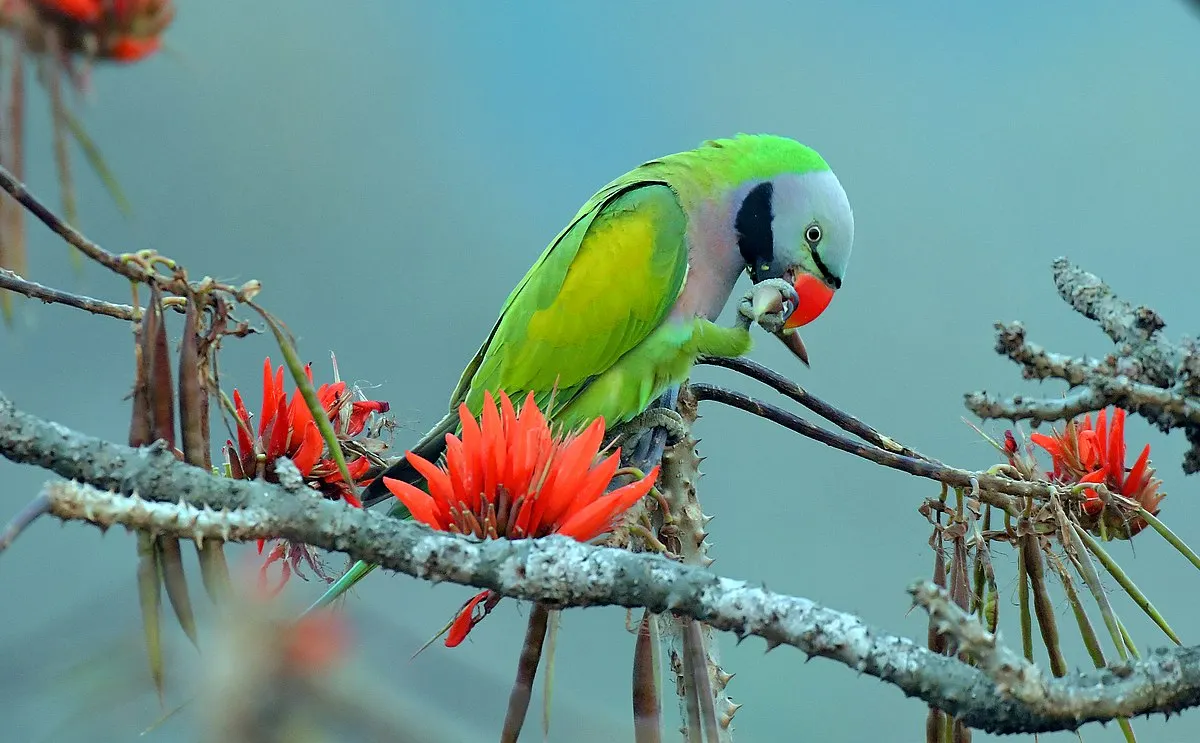
Owning a parakeet as a pet comes with numerous benefits that contribute positively to the overall wellbeing of their human caregivers. These vibrant, intelligent, and sociable birds not only add color to your life, but they offer companionship, mental stimulation, and several other advantages.
1. Companionship
Parakeets have a sociable and affectionate nature, which allows them to create strong bonds with their human caregivers. They thrive on social interaction and can provide genuine companionship, making them a delightful presence in any household. Owners often find solace and joy in the unique connection they share with their parakeet.
2. Emotional Wellbeing
Interacting with pets, including parakeets, has been known to positively improve the mental health in humans. Studies have shown that engaging with pets can help alleviate stress, anxiety, and depression. The presence of a parakeet in your home can add purpose and responsibility to daily routines and create a sense of being needed/wanted, which helps improve emotional wellbeing.
3. Intellectual Stimulation
Parakeets, especially budgies, possess an innate ability to mimic human speech and can learn to imitate sounds and words. Teaching your parakeet to talk or training them to perform small tricks can be a fun and engaging pastime.
Characteristics of Parakeets
Understanding the physical and behavioral characteristics of parakeets can help you provide excellent care for these lovely birds.
A. Appearance and Size
Parakeets typically range from 7-18 inches in length, including their tail feathers. The size varies significantly between species, with budgies being on the smaller end. Their bodies are slim and streamlined, and they have a strong curved beak which assists them in breaking hard seeds.
B. Color Varieties of Parakeets
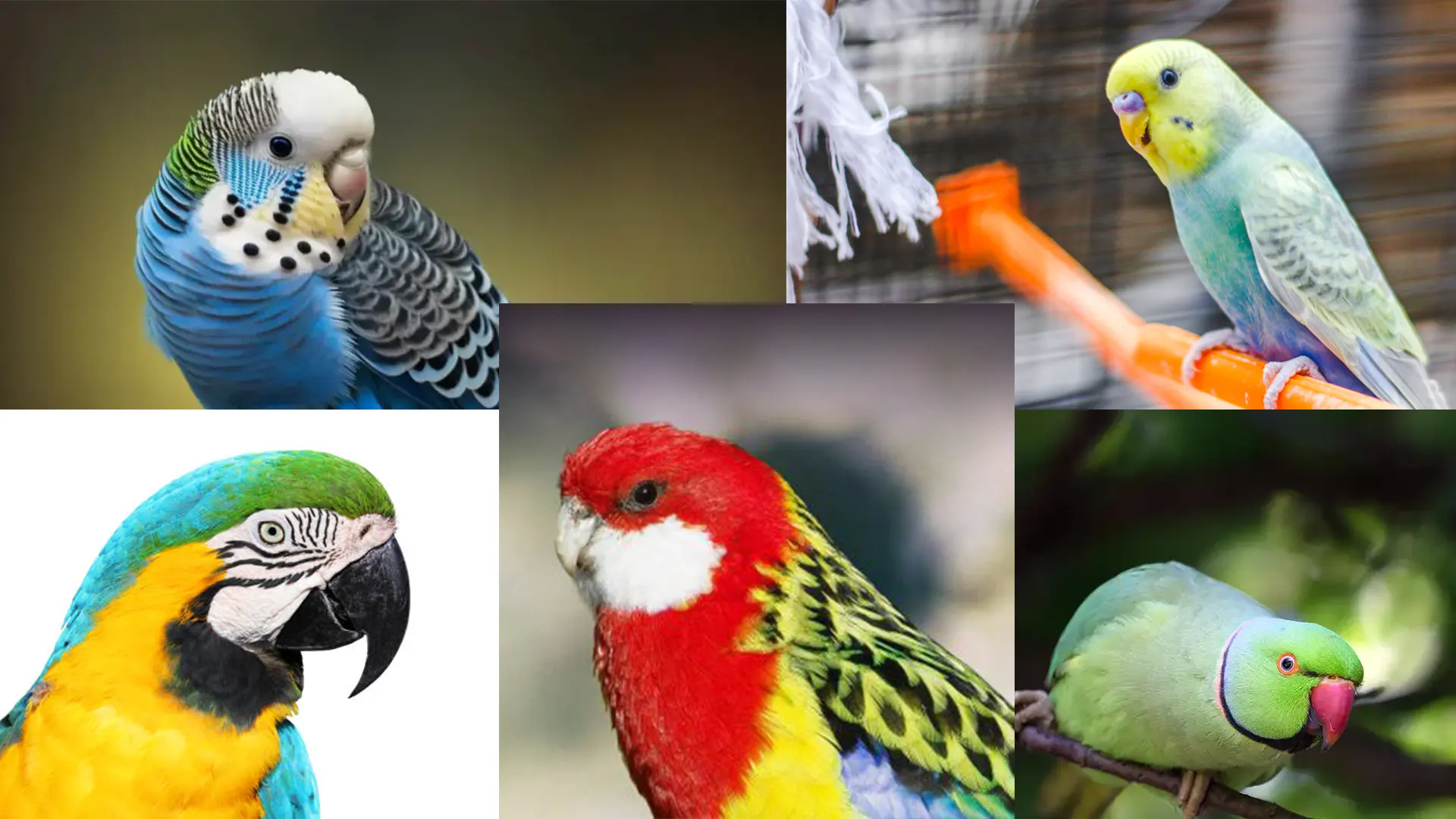
There is a parakeet color to fit every aesthetic – from greens to yellows, blues, and multicolor combinations. While wild parakeets usually exhibit green plumage, selective breeding has brought about a wide range of colors in domesticated parakeets.
C. Lifespan of Parakeets
On average, parakeets live for around 10-15 years; however, some do live up to 20 years or even more. Lifespan depends heavily on the diet, environment, genetics, and overall quality of care provided to them.
D. Vocalizations and Sounds
Parakeets produce a wide variety of sounds — chirps, warbles, whistles and more. They are adept at mimicking human speech, and interaction with their owners is often marked by playful noises and mimicked words.
E. The Parakeet Personality
Although personalities can vary among individual parakeets, they generally share behavioral traits and characteristics representative of their species. If you’ve ever had the privilege of sharing your home with one of these little chirpers, you’ll know that they’re not just pretty faces. No siree, beneath those shimmering plumes lies a pocket-sized powerhouse of antics and captivating behaviors that can keep you entertained for hours on end!
Your parakeet might be one or all of these:
- The Socialite: They’re sociable, they’re affectionate, and they love spending time with their best friend, you. So don’t be surprised if your parakeet likes to snuggle! A shoulder sit or a gentle rub on the cheek is their version of Netflix and chill!
- The Diva: Mirror, mirror, on the wall, who’s the fairest bird of all? Parakeets take pride in their appearance and thus devote a significant amount of time and effort to preening their feathers to keep them in tiptop shape. They will also thank you for a good ol’ a bird bath or a light mist spray,
- The Acrobat: Whether they’re dangling from toys or swinging upside down, these guys can’t resist a good thrill.
- The Singing Maestro: Beethoven, who? These birds can be quite the virtuosos — from your favorite Disney tunes to catchy pop hits, to crafting their own melodious tunes, the Parakeet can whistle an entire library of tracklist-worthy masterpieces.
Here’s an almost 4-hour long video of a Parakeet singing masterclass:
Parakeets are highly expressive and capable of displaying a wide range of emotions. They show signs of happiness, boredom, excitement, fear, illness, and even anger. Understanding these emotional states and responding appropriately helps establish a positive relationship with your parakeet.
Care Tips for Parakeets
Proper care ensures your parakeet lives a healthy, long and happy life. The key to this is a suitable environment, proper handling, and good hygiene.
A. Choosing the Right Cage and Supplies
When you think cage, go big. A parakeet’s cage should be wide enough for them to spread their wings entirely and fly short distances. Nobody wants to live in cramped quarters — same applies to parakeets. Think mini-mansion, not box cage. Cages with horizontal bars can provide them a fun climbing activity. Ensure the cage has multiple perches at varying heights and diameters, a water dish, and food cups.
Nobody wants to live in cramped quarters — same applies to parakeets. Think mini-mansion, not box cage.
B. Setting up a Comfortable Habitat
Cage placement matters. Parakeets, just like we humans, need consistent, comfortable room temperatures, so avoid putting the cage near drafty windows or doors, appliances giving off heat, or in direct sunlight.
Stimulating their intellect is key! Equip the cage with an array of engaging, safe bird toys to keep their active and inquisitive minds occupied.
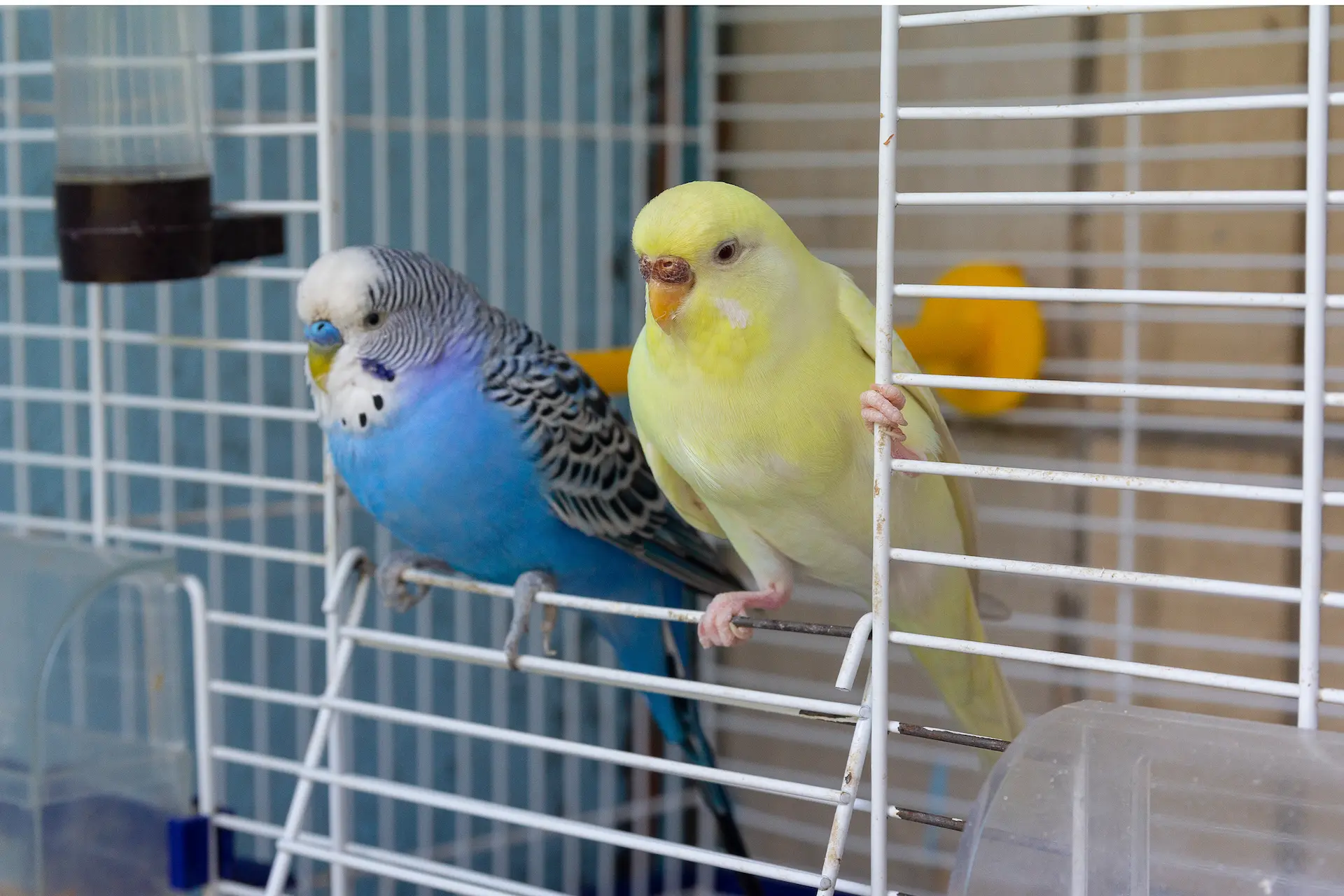
C. Proper Handling and Socialization
Creating a connection with your parakeet forms the bedrock of your journey together. This beautiful relationship, however, won’t bloom overnight. Patience is key.
Start by making your presence familiar around the cage. Speak softly, read to them, or play calm music to get them accustomed to your voice. Gradual, calm interactions facilitated by feedings or treats can help warm them up to you.
Remember, positive reinforcement works wonders! Encourage good behavior or any interaction with treats or verbal praise, further cementing that trust.
Do this, and the bond with your bird will strengthen over time.
D. Maintaining Cleanliness and Hygiene
Hygiene is important for a healthy parakeet. A clean cage is not just aesthetically pleasing but also crucial in keeping diseases and infections at bay. Here’s what you should do:
- Change the cage lining frequently.
- Clean food and water dishes daily to prevent any bacterial growth or contamination.
- Regularly wipe down perches and toys
- Sterilize the entire cage weekly to stop any bacterial or fungal growth.
A clean bird is a happy bird!
E. Respect Their Sleep Patterns
These birds need ample sleep, approximately 10-12 hours a night. Disturbances could mess up their sleep cycle and lead to stress or health problems.
At dusk, cover the cage gently with a light, breathable cloth. This mimics the setting sun and signals to your parakeet that it’s time to retire for the evening.
Just like you’d want your sleep undisturbed, also respect theirs — don’t shout, or blast loud music. It’s just rude.
What Can My Parakeet Eat?

Your parakeet needs a balanced diet to function properly – a combination of commercial pellets, fruits, vegetables and seeds are recommended.
1. Seeds
Seeds are a natural component of a parakeet’s diet. They enjoy the taste and the act of cracking the shells can be stimulating. However, seeds shouldn’t be the sole component of the diet as they can be high in fat and low in certain key nutrients.
2. Pellets
Pellets are a beneficial addition to the parakeet diet. These are specifically constructed to provide a balanced diet for your feathered friend, ensuring they are getting the right combination of proteins, vitamins, and minerals. Aim to make pellets about 50-70% of your parakeet’s diet.
3. Fresh Produce
Adding fresh fruits and vegetables to your parakeet’s diet is a good way to provide them with the essential vitamins, fiber and hydration they need. Spinach, kale, carrots, and apples are good options. Keep in mind that all fresh food should be washed before feeding. Certain foods like avocados, chocolate and caffeine are harmful for parakeets and should be avoided.
4. Water
Yes, fresh and clean water is mandatory for the wellbeing of your parakeet, and it must be available at all times. Change and refill their water dish daily and clean the dish regularly to avoid bacterial and algae growth.
5. Cuttlebones and Mineral Blocks
Parakeets need calcium for healthy bones and feathers, and cuttlebones and mineral blocks are great sources of this nutrient. They also help in beak maintenance as parakeets will gnaw at them, which helps keep the beak trimmed.
6. Proteins
Although parakeets don’t need a lot of protein, occasional servings can be good for their health. Boiled eggs, lentils, and peas are examples of suitable protein sources.
7. Treats
Treats, such as honey sticks or birdie biscuits, can be given sparingly to your parakeet. These are often used as a bonding mechanism or a training reward, but they shouldn’t constitute a significant part of your parakeet’s diet.
Understanding Your Parakeet’s Behavior
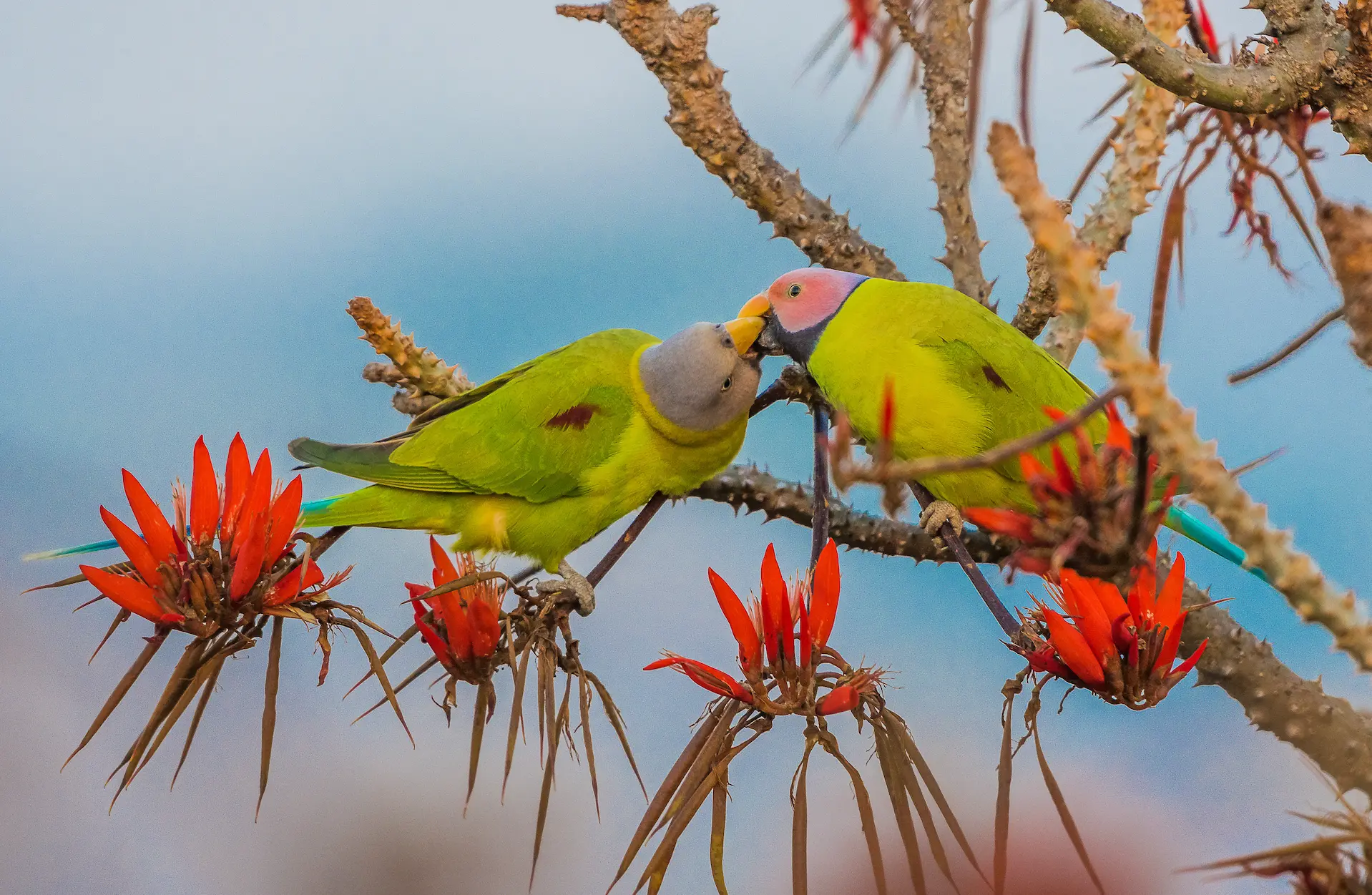
Parakeets are intelligent, social birds with a range of behaviors that can be both fascinating and occasionally challenging to understand. To effectively understand and respond to your bird’s needs, you need to learn about their behavior and patterns.
1. Social Hierarchy & Interaction
Parakeets are highly social creatures that thrive in groups, also known as flocks. They rely on social interactions for emotional wellbeing, mental stimulation, and safety. As a parakeet owner, you have to fulfil their social needs either by providing them with a companion or spending quality time bonding with them regularly.
2. Vocalization and Communication
Parakeets use various sounds and vocalizations to communicate their emotions, intentions, or needs. Some common vocal behaviors include:
- Chirping: Happy and content parakeets often chirp, signalling they’re relaxed and comfortable in their environment.
- Chattering: Parakeets that are chattering are engaged, curious, and may be exploring new elements in their surroundings.
- Screaming or screeching: This might indicate distress, fear, frustration, or a call for attention.
Apart from vocalization, parakeets also communicate through body language. Observing their posture, expressions, or actions can help you better understand their emotions and needs.
3. Preening and Grooming
Preening is a common parakeet behavior that involves cleaning and grooming their feathers. It’s a necessary routine for feather maintenance and overall hygiene, helping to remove dirt, dust, and parasites.
4. Playing and Foraging
Parakeets are intelligent birds that require mental stimulation to stay happy and healthy. Playtime with toys and foraging activities that mimic natural feeding behaviors provide an outlet for both physical exercise and mental enrichment.
5. Regurgitation and Bonding
Regurgitation is a natural process where parakeets bring up their food from their crop to share with other birds in the flock. While it might seem unusual, regurgitation is a display of affection and a sign of bonding.
6. Mating Behavior
When parakeets reach sexual maturity, they may display mating behaviors like courtship dance, singing, or even nest-building. Providing them with a suitable nesting box and ensuring appropriate care for breeding parakeets is essential in such cases.
7. Molting
Molting is a normal process where parakeets lose old feathers and grow new ones. This can cause their behavior to change, making them more irritable, lethargic, and sensitive to touch.
Keeping a watchful eye on your parakeet’s behavior and understanding their needs is an essential aspect of being a responsible and caring bird owner. As you observe and learn more about your parakeet’s unique personality you’ll be able to create a stronger bond and provide a healthy, safe environment for them to thrive.
Fun and Toys for Parakeets
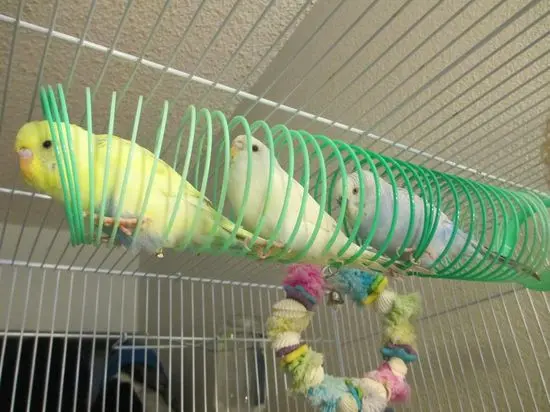
Provide your parakeet with a variety of toys that can accommodate their need for play, exploration, mental stimulation, and exercise. Here’s a look at different types of toys:
- Chew Toys: Parakeets are natural chewers. Chew toys made from safe, non-toxic materials like wood or cardboard can help satiate their instinct to gnaw and keep their beaks in good condition.
- Foraging Toys: In the wild, parakeets spend a large part of their day foraging for food. Foraging toys encourage your bird to work for their treats, stimulating their brain and replicating their natural behavior.
- Climbing Toys: Toys such as ladders, ropes, or mesh can offer your bird opportunities for climbing and swinging, providing good physical exercise and dexterity.
- Musical Toys: Parakeets are known for their vocal abilities and many enjoy interacting with bell toys or mirrors that produce sounds.
- Puzzle Toys: Intelligent birds like parakeets often enjoy mentally stimulating toys that challenge them to solve problems for rewards.
- Bathing Toys: Many parakeets enjoy water. Offering bathing toys or shallow bathing dishes can provide them with a fun way to cool off and maintain their feather health.
Selecting the Right Toys
When choosing toys for your parakeet, consider the following things:
- Safety: Always choose toys that are made from bird-safe materials. Avoid toys with small, loose parts, as they can constitute a choking hazard.
- Size: The toy’s size should be appropriate for your bird. It should not be too large that your parakeet cannot interact with it properly, nor too small that it may pose a choking risk.
- Variety: Providing a mix of different toys will keep your parakeet’s environment stimulating and fun. Rotate toys once in a while to keep your pet’s interest levels high.
- Placement: Position the toys in a way that encourages active play but doesn’t impede your bird’s ability to move comfortably within the cage.
Health Challenges and Prevention
Parakeets, like all pets, can face health challenges throughout their lifetime. Early detection and prevention of potential issues are key to ensuring a long, healthy life for your feathered companion.
- Psittacosis: This bacterial disease, also known as “parrot fever,” can cause symptoms such as nasal discharge and difficulty breathing.
- Feather Plucking: Often a sign of stress or boredom, feather plucking can be mitigated by enhancing your bird’s environment and reducing distress factors.
- Parasites: Parakeets can become infested with mites or lice, causing discomfort and potential anemia. Regular cage cleaning and inspections are important preventive measures.
- Respiratory Issues: Respiratory diseases in parakeets, caused by bacterial, fungal, or viral infections, present as wheezing, labored breathing, or nasal discharge.
- Egg Binding: Female parakeets may occasionally have difficulties passing eggs, which can become life-threatening. Adequate calcium in-take and a balanced diet can help reduce the risk.
Prevention is key in avoiding many of these issues and maintaining the health of your parakeet. Regular veterinary care, good nutrition, a clean living environment, and mental stimulation contribute significantly to your pet’s overall wellbeing. Always seek help from a professional avian vet in case of a health issue.
Signs of Illness and When to Seek Veterinary Care
Signs of illness can include lethargy, change in droppings, loss of appetite, ruffled feathers, or abnormal behavior. Immediate veterinary care should be sought when you spot these signs.
Final Thoughts
Parakeets are amazing as pets, but just before you rush off to adopt one, you should know it involves dedication, time, and understanding of the bird’s needs and characteristics. But, in the end, it is worth it — there’s hardly a dull moment with these little charmers around!
So, we hope this post serves as a handy guide, a friendly adviser, and a reassuring pat on the back as you embark on this exciting journey.
Until next time!
Frequently Asked Questions (FAQs)
Find answers to common questions from other parakeet owners, including questions about lifespan, teaching your parakeet to talk, signs of a healthy parakeet, their diet, and cage cleaning frequency.
1. Can parakeets talk like other parrots?
Yes, some parakeet species, particularly budgies, are known for their ability to mimic human speech. However, each individual parakeet varies in its ability to talk, and not all can learn this skill.
2. Are parakeets noisy pets?
Parakeets are social and communicative birds. They can be noisy, especially when they are happy or seeking attention. Although they are not as loud as larger parrots, prospective owners should be aware that their birds might produce frequent chirps and chatter.
3. How can I tell if my parakeet is male or female?
In many species, males and females have subtle differences in coloration or markings. For example, in budgies, mature males have blue ceres (the fleshy area surrounding the nostrils), while females have pink, beige, or brown ceres.
4. Can parakeets be kept with other bird species?
It is generally safer and more harmonious to keep birds of the same species together. However, some non-aggressive species can coexist peacefully if given proper space and supervision. Seeking expert advice is recommended before mixing species.
5. How do I tame and bond with my parakeet?
Taming and bonding with your parakeet require time, patience, and gentle, consistent interaction. Start by getting your bird accustomed to your presence and offering treats as positive reinforcement. Gradually increase the level of interaction, allowing your bird to set the pace of progression.
6. What temperature should my parakeet’s environment be?
Parakeets prefer a stable, comfortable temperature ranging from 65°F to 75°F (18°C to 24°C). However, they can tolerate slight fluctuations in temperature. Extreme heat or cold can cause stress and health issues.
7. Can I keep a single parakeet, or do they need a companion?
Parakeets are social birds and thrive in the company of their own kind. However, if you can provide consistent interaction and socialization, a single parakeet can bond with you and lead a happy life.
8. What kind of toys do parakeets enjoy?
Parakeets are intelligent and curious and enjoy toys stimulating their physical and mental capabilities. They enjoy puzzles, foraging toys, swings, ladders, climbing ropes, and different types of perches.
9. Do parakeets need to bathe?
Parakeets enjoy bathing as it helps them maintain their plumage. Providing a shallow dish of water for them to bathe in or gently misting them with water can satisfy their bathing needs.
10. Can I teach my parakeet tricks?
Yes, parakeets can learn simple tricks like stepping up onto your finger, spinning around, or playing with a ball. Training your parakeet helps strengthen your bond and provides mental stimulation.
11. What kind of fruits and vegetables can I feed my parakeet?
Parakeets enjoy a variety of fruits and vegetables like apples, bananas, berries, spinach, kale, carrots, broccoli, and corn. Fruits and vegetables should be washed and chopped into appropriate sizes.
12. What kind of seeds can I feed my parakeet?
Parakeets enjoy a mix of seeds like millet, canary seeds, safflower, and sunflower seeds. However, seeds should be offered in moderation, since an all-seed diet can lead to nutritional deficiencies.
13. Are there any toxic foods I should avoid feeding my parakeet?
Avoid feeding parakeets avocado, chocolate, caffeine, or alcohol, as these can be toxic and possibly life-threatening to birds. Additionally, limit high-fat or high-sugar items like nuts and fruit seeds, and avoid feeding them any salty or processed foods.
14. How often should I clean my parakeet’s cage?
Food dishes and water containers should be cleaned daily. Cage lining should be replaced every few days or as needed, and the entire cage should be thoroughly cleaned and disinfected weekly.
15. What common health issues might my parakeet face?
Parakeets can suffer from respiratory illnesses, mite infestations, bacterial infections, dietary deficiencies, kidney disease, and tumors. Monitoring your parakeet’s behavior, diet, and feces can help you spot potential health issues early on. Regular consultation with an avian veterinarian is also important.
